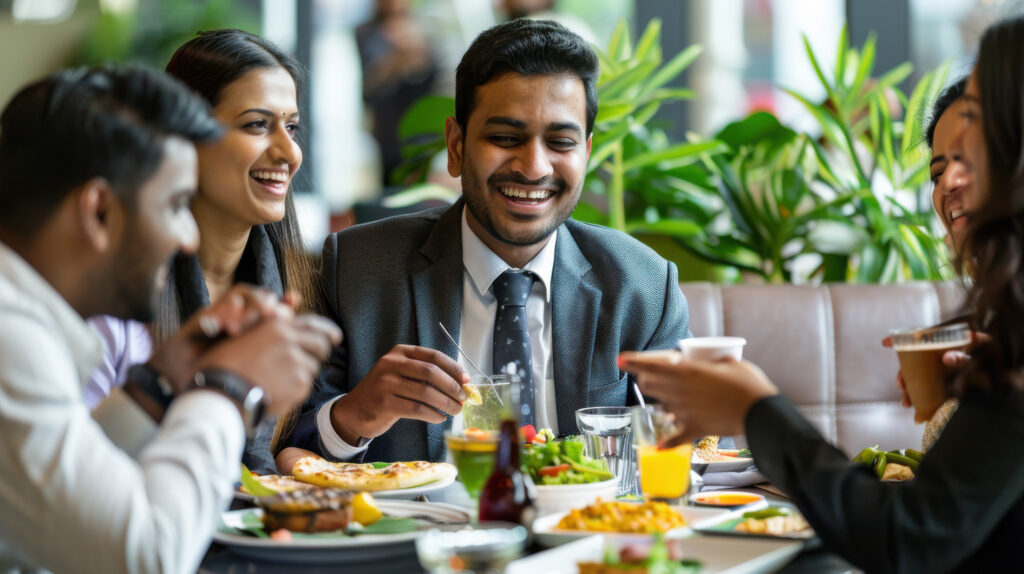
Introduction
In the competitive world of the restaurant industry, attracting and retaining customers is crucial for success. Social media ads have emerged as a powerful tool for restaurants to drive foot traffic and increase revenue. By leveraging the vast reach and targeting capabilities of social media platforms, restaurants can effectively promote their offerings and engage with their audience.
In this blog, we’ll explore the importance of social media ads for restaurants specifically with key strategies, budgeting tips, and how to handle leads to maximize your marketing efforts.
Understanding Social Media Ads for restaurants business
Definition: Social media ads for restaurants paid advertisements that appear on social media platforms like Facebook, Instagram, Twitter, and LinkedIn. Unlike organic posts, these ads are specifically designed to reach a targeted audience and drive specific actions, such as visiting your restaurant or making a reservation.
Key Metrics: To measure the effectiveness of your social media ads for restaurants, it’s essential to track key metrics:
-
Cost Per Acquisition (CPA): The cost of acquiring a new customer through your ads.
-
Return on Ad Spend (ROAS): The revenue generated from your ads compared to the cost of running them.
-
Conversion Rates: The percentage of users who take a desired action (e.g., making a reservation) after seeing your ad.
Strategies for Social Media Ads
Search Engine Optimization (SEO): While not directly related to social media ads, SEO is crucial for ensuring your restaurant’s website ranks high in search engine results. This can complement your social media efforts by driving organic traffic to your site.
Pay-Per-Click (PPC) Advertising: PPC campaigns on platforms like Google Ads can drive targeted traffic to your restaurant’s website. By bidding on relevant keywords, you can appear at the top of search results when potential customers are looking for dining options.
Social Media Ads for Restaurants: Social media platforms offer robust advertising tools that allow you to target specific demographics, interests, and behaviors. Here are some key strategies:
-
Facebook Ads: Use Facebook’s detailed targeting options to reach local audiences, promote events, and drive reservations.
-
Instagram Ads: Leverage Instagram’s visual appeal to showcase your dishes and ambiance. Stories ads and carousel ads are particularly effective for engaging users.
-
Twitter Ads: Utilize Twitter’s real-time nature to promote time-sensitive offers and engage with a broader audience.
-
LinkedIn Ads: If you’re targeting corporate clients or business travelers, LinkedIn ads can be a valuable tool.
Email Marketing: Building an email list and sending targeted promotions can drive repeat visits and increase customer loyalty. Use social media ads to capture email addresses and nurture leads through personalized email campaigns.
Budgeting for Social Media Ads for Restaurants
Setting a Budget: Start by setting a realistic budget based on your marketing goals and available resources. Consider factors like your target audience size, ad frequency, and desired outcomes.
Allocating Resources: Allocate your budget effectively across different channels. For example, you might allocate 40% to Facebook Ads, 30% to Instagram Ads, 20% to PPC, and 10% to email marketing. Adjust these percentages based on your specific goals and performance data.
Measuring ROI: Use analytics tools provided by social media platforms and PPC platforms to measure the ROI of your social media ads for restaurants. Track key metrics like CPA, ROAS, and conversion rates to understand the effectiveness of social media ads for restaurants and adjust your strategy accordingly.
Expected Footfalls and Lead Handling
Predicting Foot Traffic: Use data and analytics to predict the expected foot traffic from your social media ads. Platforms like Facebook and Instagram offer insights into ad performance, helping you forecast the number of visitors.
Handling Leads: Develop strategies for managing and converting leads. This might include:
-
Personalized Follow-Ups: Send personalized messages to users who interact with your ads, offering special promotions or incentives.
-
Special Offers: Create limited-time offers to entice users to visit your restaurant.
-
CRM Tools: Use Customer Relationship Management (CRM) tools to track and nurture leads, ensuring that no potential customer slips through the cracks.
Case Studies
Several restaurants have successfully implemented social media ads to drive significant growth. For example, Joe’s Pizza in New York City used targeted Facebook ads to promote their new menu items, resulting in a 30% increase in foot traffic and a 25% increase in revenue.
Similarly, The Cheesecake Factory leveraged Instagram ads to showcase their signature dishes, leading to a 20% increase in reservations.
Future Trends
As social media platforms continue to evolve, restaurants must stay ahead of the curve to leverage these tools effectively. Some future trends to watch include:
-
Augmented Reality (AR): Platforms like Instagram and Facebook are incorporating AR features that allow users to experience your restaurant in new ways.
-
Video Content: Video ads are becoming more popular, offering a more engaging way to showcase your dishes and ambiance.
-
Influencer Partnerships: Collaborating with local influencers can help you reach a broader audience and build credibility.
Call to Action
Comment below with your biggest challenge in social media ads for restaurant you own! We also have a seperate division and expertise to handle complete 360 degree marketing through our parent venture ‘En route Digital’. Follow us for more tips on maximizing your marketing efforts and driving foot traffic. You may also read on AI in Hospitality Marketing,
By leveraging social media ads for restaurants can create more engaging, targeted campaigns that drive foot traffic and increase revenue. As technology continues to advance, it’s essential for businesses to stay informed and adapt to these changes to remain competitive. At Enroute Social, we specialize in setting up social media ads for restaurants to maximize their digital presence and leverage the latest technologies to drive growth and enhance guest experiences.

